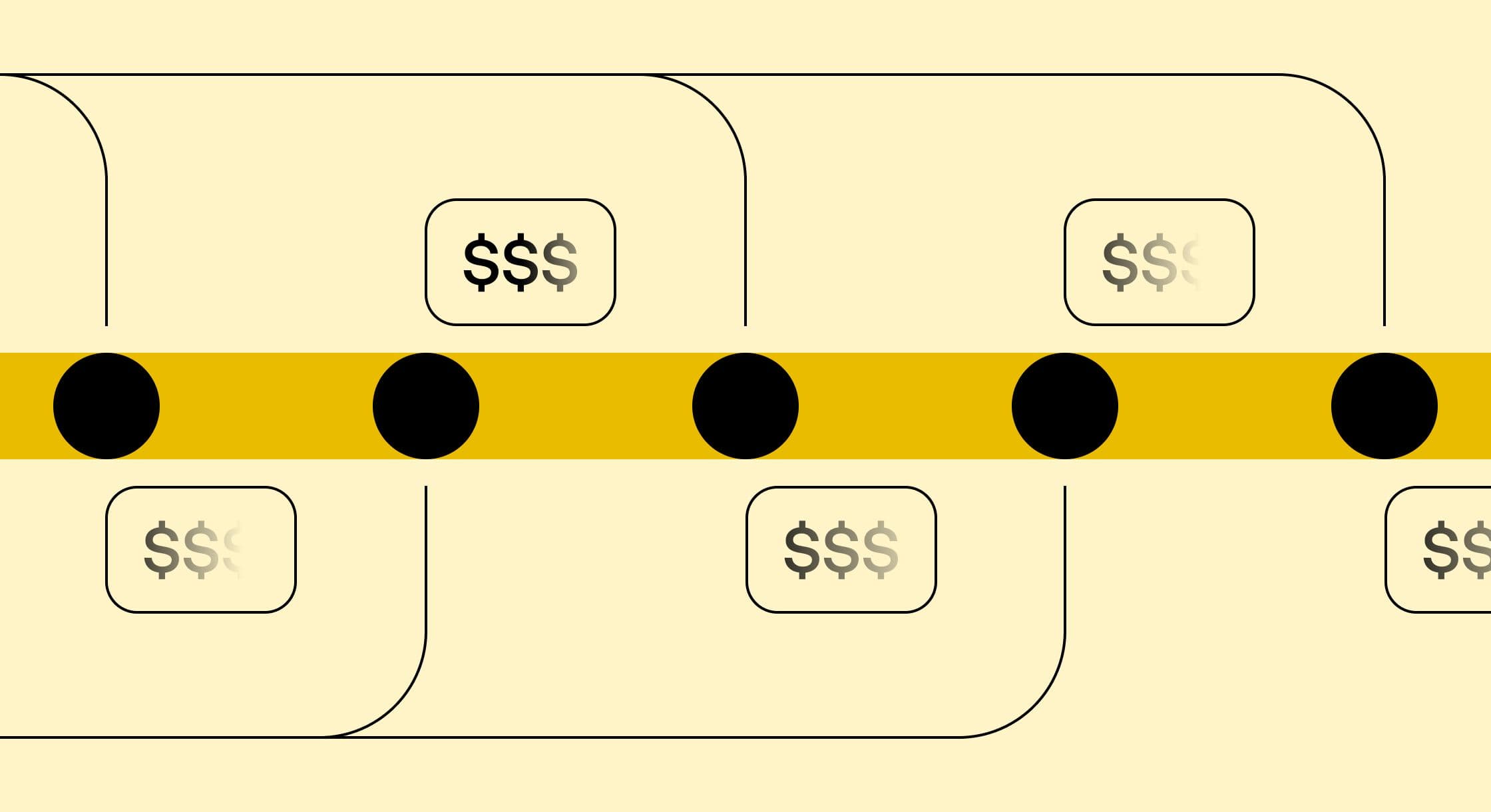/Is FBA Amazon Worth It? A Balanced Review

Is FBA Amazon Worth It? A Balanced Review
Is FBA Amazon worth it? If you’re wondering if starting an Amazon business and leveraging Amazon's infrastructure will pay off, you’re not alone. FBA makes selling easy by taking care of storage, packing and shipping. But it’s not free and it’s not easy. We’ll go into how FBA works, the pros and cons, the potential profit and what it takes to succeed. By the end you’ll have a balanced view to decide if FBA Amazon is worth it.
Quick Summary
- FBA makes order fulfillment easy so sellers can focus on growing their business and benefit from Amazons infrastructure.
- FBA gives sellers more sales and access to Amazon Prime customers but sellers must navigate Amazon fees and loss of control over packaging.
- Profitability can be achieved in the first year but careful financial management and strategic product selection is key to overcoming the challenges in a competitive market.
What is Amazon FBA
Amazon FBA (Fulfillment by Amazon) is a program that simplifies the logistics of selling online. Since it launched in 2006 it has changed the face of e-commerce by allowing sellers to use Amazon’s vast logistics network, including amazon fulfillment centers, to reach a global customer base with ease and efficiency.
With FBA sellers store their products in amazon's fulfillment centers where Amazon takes care of storage, packing and shipping. So sellers can focus on inventory management and other parts of their business while Amazon handles the heavy lifting in the fulfillment centers.
How FBA Works
Selling on Amazon using FBA involves a few key steps. Sellers ship their products to Amazon's warehouses. Once the products arrive at Amazon's fulfillment centers, Amazon takes over, managing storage, packing, and shipping. This makes it easy for sellers to focus on other parts of their business knowing their order fulfillment.
When a customer orders a product, Amazon picks, packs, and ships it to the customer. Sellers just need to monitor their inventory and replenish as needed. This hands-off approach to fulfillment is one of the main reasons many sellers use the Amazon FBA program.
FBA Benefits
One of the biggest benefits of FBA is access to Amazon Prime customers which can increase product visibility. Products listed under FBA are eligible for free 2 day shipping so they are more attractive to customers. This not only increases visibility but also builds trust with customers as they know they can rely on Amazons fast and reliable shipping services, ensuring a positive shopping experience.
Using FBA also reduces the logistical burden on sellers. Storing products in Amazons warehouses means sellers don’t have to manage their own inventory storage. Amazons logistics network also means sellers get lower shipping costs and faster delivery options like same day and next day shipping.
FBA also simplifies supply chain management so sellers can focus on growth not logistics. Amazon handles customer delivery and provides exclusive tools and support so sellers can operate more efficiently and scale their online business. This streamlined approach allows sellers to focus on growth and strategy while leveraging Amazon’s robust infrastructure for fulfillment.
FBA Drawbacks
While FBA has many benefits it’s not without its downsides. One of the main concerns for sellers is the high fees. These fees can eat into a big chunk of revenue so sellers need to manage their expenses carefully. Sellers also have to follow Amazons rules and guidelines which can limit their control over certain parts of their business, unlike managing their own website where they have full control.
Another drawback is the loss of control over packaging and branding. Since Amazon packs and ships the product sellers have little control over how their product is presented to the customer.
Lastly sellers need to be prepared to navigate Amazons ever changing policies and rules. Failure to comply can result in costly returns and even suspension of their seller account. The dependence on Amazons policies means sellers need to stay informed and agile to run their business smoothly.
How Much Money Can You Make on Amazon FBA
Making money on Amazon FBA can be big, as it remains a potentially profitable business model for many sellers who are making good revenue. But to achieve and maintain profitability you need to understand the factors that affect profit margins and time to profitability. Careful management of expenses, strategic product selection, and effective marketing efforts are essential to ensure that your Amazon FBA business remains profitable in the long run.
Looking at average earnings, profit margins and time to profitability gives sellers an idea of the financial potential of their Amazon FBA business.
Amazon Seller Earnings
Most Amazon sellers make at least $1,000 a month, 19% make over $10,000 a month.Amazon FBA sellers average monthly sales range from $1,000 to $25,000. 57% of sellers make over 10% profit margin, so a big chunk of sellers are seeing significant returns on their investment. This indicates that with the right strategies and careful financial management, many sellers can achieve substantial profitability on the platform.
For small to medium sized business (SMB) sellers 30% make lifetime profits over $50,000 so there is long term profitability potential. Many seasoned Amazon sellers have diversified their product lines so they have a profitable business model and consistent growth and profitability and therefore more earnings.
Profit Margin Factors
Fees can eat into profit margins so expense management is key to profitability. Amazon sellers have several types of fees, seller fees, ad fees, inventory fees. Fulfillment and storage fees can eat into profit margins especially for slow-moving inventory. Sellers need to be vigilant about their inventory turnover rates and ensure that their products are selling consistently to avoid incurring excessive storage fees.
Expense management and considering cost of goods, Amazon FBA fees and desired profit margin is key to profitability.
Time to Profitability
Many sellers are profitable in their first year, 58% are profitable within that timeframe. 22% are profitable in the first 3 months, others may take 2 years or more. Factors that affect the profitability timeline are product selection, market saturation, and marketing efforts, so planning and executing a well-thought-out strategy is crucial to achieve and maintain profitability in the competitive Amazon marketplace.
Amazon FBA Costs
Understanding the costs of Amazon FBA is key to managing your finances. These costs can affect profitability so you need to analyze and understand the financial commitment before jumping into the Amazon FBA model.
The costs include fees, initial investment and ongoing operational costs.
Amazon FBA Fees
Amazon FBA fees include .referral fees, fulfillment fees and monthly storage fees. Referral fees vary by product category and can be a percentage of the sale price or a minimum fee. Fulfillment fees are per unit and based on product weight, so it's crucial to understand how these fees will affect your overall profit margins. Heavier or bulkier products will incur higher fees, which can significantly cut into your earnings. Therefore, selecting products with a favorable weight-to-profit ratio is essential for maintaining profitability.
Monthly storage fees are based on the space used by your inventory in Amazon’s fulfillment centers so you need to manage your inventory efficiently to minimize costs.
Initial Investment
Starting an Amazon FBA business typically requires an initial investment of $5,000 or less. This is for inventory, tools and startup costs. But using credit cards or loans to fund the business can be risky especially if inventory doesn’t perform well.
Sellers should think carefully before taking on debt to fund their Amazon FBA business. It's important to weigh the potential risks and benefits, as taking on debt can put significant financial strain on a business, especially if the inventory does not perform as expected.
Ongoing Operational Costs
Ongoing operational costs is key to profitability in an Amazon FBA business. This includes maintaining optimal inventory levels to avoid overstocking and understocking both of which can result to penalties. Sellers should remove non-performing listings to minimize ongoing storage costs and make sure their inventory is cost effective.
Amazon Marketplace Competition
The competitive nature of the Amazon marketplace requires sellers to monitor their competitors and adjust their strategy to win. Understanding market saturation, having a strategy to stand out, and navigating Amazon policies is key to achieving and maintaining profitability in the competitive Amazon marketplace.
Market Saturation
Market saturation is when there are too many sellers in the same product category on Amazon. Some product categories are getting oversaturated and it’s hard for new sellers to get visibility.
But there are opportunities in high demand low review products which often means less competition. Targeting these products allows new sellers to find a niche with high demand and less competition.
Strategies to Stand Out
To differentiate products, sellers should focus on unique value propositions, quality enhancements and marketing strategies. Relevant keywords, high quality images, detailed product descriptions, and positive customer reviews are the elements of optimizing listings effectively. These components help attract more customers, improve conversion rates, and enhance overall visibility on the Amazon marketplace.
Having unique selling propositions and quality enhancements is key to standing out in a competitive market.
Amazon Policies
Amazon policies changes can affect seller strategy and the overall competitive landscape. Amazon updates policies frequently so sellers need to adjust their market strategy accordingly.
Sellers must adjust their strategy based on Amazon policy changes to stay competitive.
Tools and Resources for Amazon FBA Sellers
The Amazon FBA program gives e-commerce sellers access to the latest trends and demand, an edge over the competition. Many sellers attribute their success to product selection and marketing strategy, giving them an advantage in the market.
To improve FBA selling and profitability sellers need tools to help them with operations.
Product Research Tools
Product research tools are essential for Amazon FBA sellers as it helps them find profitable niches and optimize listings. Google Keyword Planner can be used for keyword research to check search trends for products on Amazon. Keepa provides historical data on Amazon product listings to help with tracking price changes, sales rank, and product availability trends. This data is invaluable for making informed decisions about pricing strategies and inventory management, ensuring that sellers optimize their listings for maximum profitability.
CamelCamelCamel is a free tool that tracks price on Amazon, useful for both sellers and buyers. Using customer reviews to find pain points can help sellers improve their product listings and marketing strategy.
Inventory Management Solutions
Inventory management is key to avoid stockouts or excess inventory. New sellers often underestimate the importance of inventory management and end up with stockouts or excess inventory.
Inventory Manager from Jungle Scout forecasts inventory needs and prevents excess storage fees. Amazon’s Inventory Performance Index (IPI) helps optimize inventory management and avoid long-term storage fees. By maintaining a high IPI score, sellers can ensure their inventory is well-managed, reducing costs and improving overall profit margins.
Using forecasting tools helps sellers minimize storage inventory costs and overall profit margins.
Common Challenges and How to Overcome Them
Common challenges for Amazon FBA sellers are high fees and competition. Sellers face challenges such as fulfillment fees, Amazon’s terms and policies and negative reviews.
To overcome these challenges sellers should use the right strategy and be proactive.
Managing Negative Reviews
Respond to negative reviews promptly and politely and offer solutions or compensation to maintain a good seller reputation. Don’t buy fake reviews as it can lead to severe consequences and damage the credibility of your business. Instead, focus on providing excellent customer service and high-quality products to naturally garner positive reviews and build a trustworthy reputation.
To get positive reviews sellers should focus on good customer service and customer satisfaction.
Amazon’s Fee Structure
Understanding Amazon’s fee structure is key to managing costs and profitability. Stay informed of the different fees and optimize pricing to maintain healthy profit margins.
Inventory Issues
Remove non performing listings to save costs. If inventory is stored for more than 180 days costs will increase so sellers should regularly assess inventory and manage it well to avoid excess storage fees. Proper inventory management ensures that products are consistently moving, thereby reducing the risk of incurring additional costs and maintaining profitability.
Is Amazon FBA for Your Business?
To determine if Amazon FBA is for your business you need to assess if you are willing to pay for convenience and have a strategy to use the Amazon platform. Specific goals such as sales volume and customer reach need to be considered to see if Amazon FBA is for you.
In 2024 many businesses consider Amazon FBA worth the investment if they are ready to go all in.
Business Goals
Your personal goals such as financial independence and work-life balance can greatly impact your success with Amazon FBA. New sellers face challenges such as a steep learning curve and feeling intimidated when starting out. The complexities of product research, marketing strategies, and understanding Amazon's policies can be overwhelming. However, with persistence, continuous learning, and leveraging available resources, new sellers can overcome these initial hurdles and find success on the platform.
As an Amazon FBA seller you are responsible for product research, marketing and product page optimization.
Resource Availability
Significant time is required to set up and manage an Amazon FBA business. Sellers can expect to spend less than 10 hours a week on their FBA business once established, 39% of sellers report this low time investment.
To sell on Amazon sellers need to be in continuous learning, perseverance and hard work.
Alternative Models
Amazon FBA provides more scalability through access to a large customer base and Amazon’s logistics. There are higher fees with it. The marketplace is also highly competitive, requiring sellers to have a strategic approach to stand out and succeed.
FBM allows sellers to avoid FBA fees but requires much more work than FBA. Choosing between FBA and FBMdepends on the size and weight of the products.
Conclusion
Amazon FBA is a profitable business model if you are willing to put in the time and resources to succeed. The benefits of Amazon FBA such as access to Amazon Prime customers, reduced logistical burdens and ability to focus on business growth makes it attractive to many sellers. But you need to carefully consider the costs, competition, and drawbacks before jumping into the Amazon FBA business. Evaluating these factors will help you make an informed decision and prepare for the challenges ahead.
Knowing the profitability factors, managing costs and learning from other successful sellers can increase your chances of success. Whether you are a new seller or an experienced one looking to scale your business, using the tools and resources available will give you an edge in the Amazon marketplace.
In the end the decision to do Amazon FBA should be based on your business goals, resource availability and comparison of other models. With the right approach and mindset Amazon FBA can be a good investment for you.
FAQs
What is Amazon FBA?
Amazon FBA is an amazing tool that lets you store your products in Amazon’s fulfillment centers and they handle storage, packing and shipping for you. Use this to grow your business effortlessly!
How much do most Amazon sellers make?
Most Amazon sellers make at least $1,000 a month and 19% make over $10,000 a month. With profit margins over 10%, your chances of success increase significantly if you manage your expenses well and select the right products to sell.
What are the costs of Amazon FBA?
The costs of Amazon FBA are referral fees, fulfillment fees and monthly storage fees, with an initial investment of around $5,000. Knowing these costs is key to your success so plan smart and stay focused!
How can sellers stand out in the Amazon marketplace?
To stand out in the Amazon marketplace, focus on creating a unique value proposition and product quality. Optimize your listings with relevant keywords, high-quality images, and detailed descriptions to attract more customers. Additionally, gather and highlight positive customer reviews to build trust and credibility.
Is Amazon FBA for you?
Amazon FBA is for you if you want convenience and to leverage Amazon’s logistics network. Check your goals and resources to ensure it aligns with your business strategy and needs.


